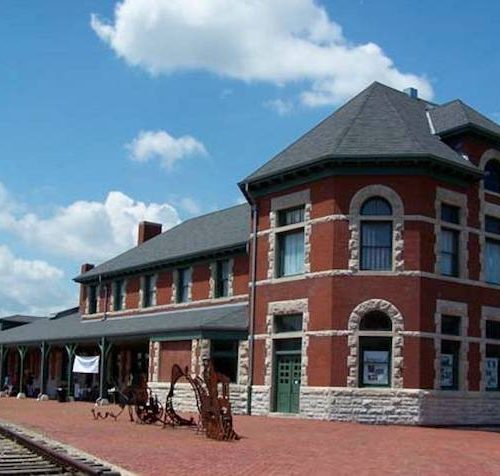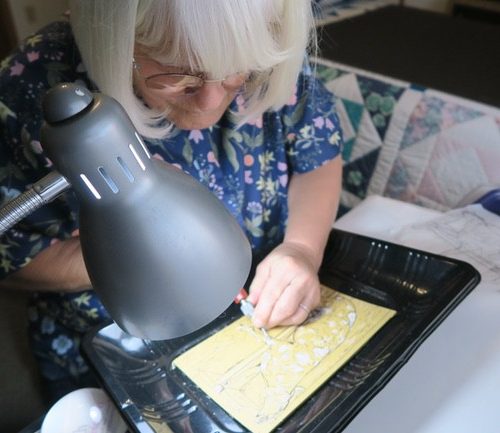The Wommack Mill commands a second look from passersby. Sitting a short distance off the small town main street in a park setting, the mill is now like the central nervous system of the town of Fair Grove. In fact, the first time I visited Fair Grove, I felt compelled to park nearby, get out of my car and walk over to the big, beautiful wooden building.
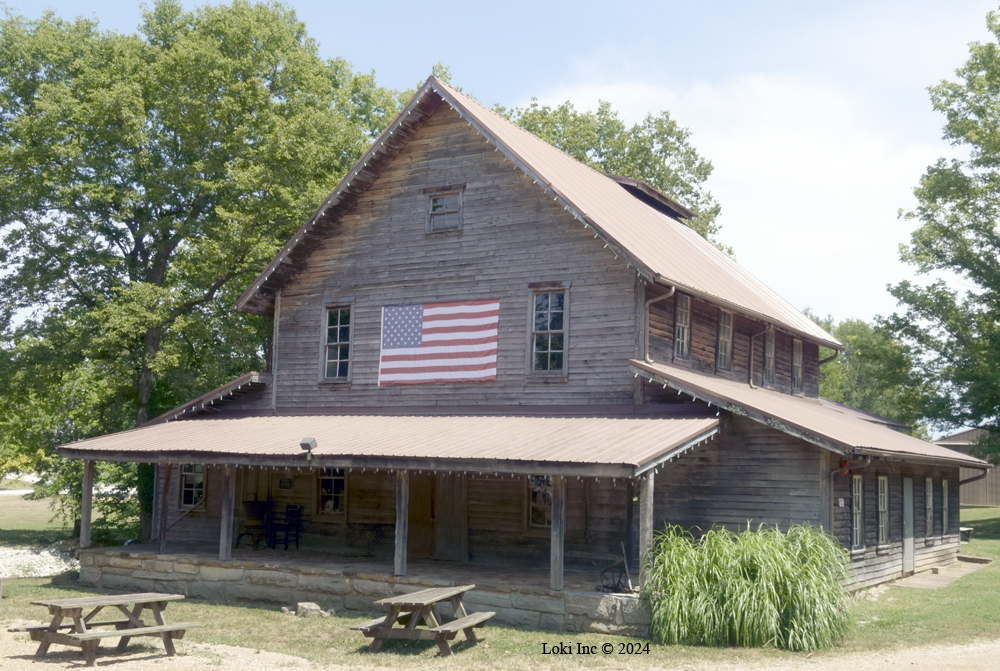
Later, I would meet Mary Terry, board president of the Fair Grove Historical and Preservation Society,for a guided tour of this mill – one of only three operating steam-powered mills left in the United States.
Terry said, “When you go through Fair Grove, it really hasn’t changed much, except for what’s in the buildings now.” She ought to know, since she’s lived here since she was 9 and her husband has been here all his life.
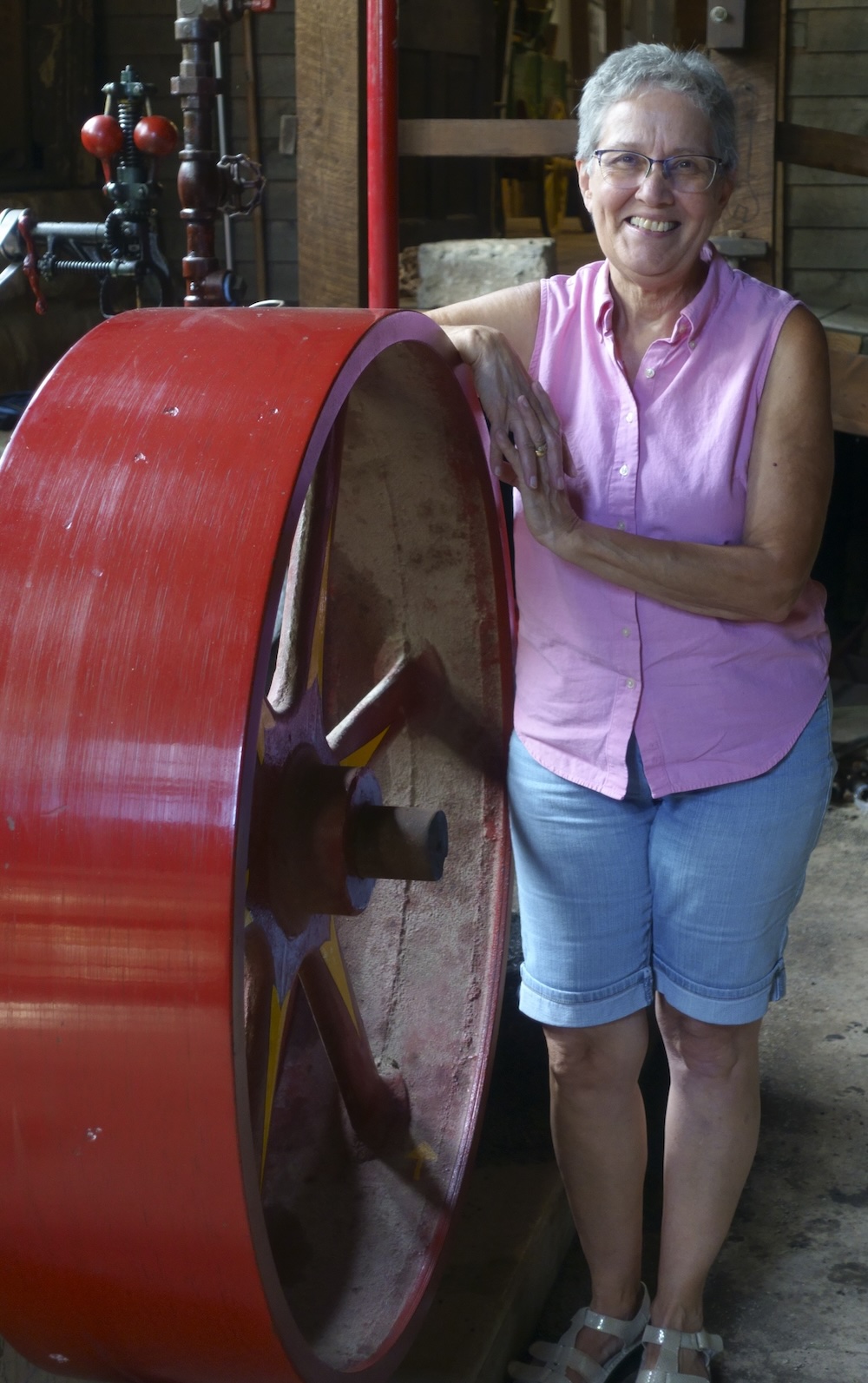
About the mills she added, “A lot of people ask, ‘Where’s the water wheel?’ Well, we’ve never ever had one. The creek out here never flowed all the time. You can see where it was dammed up and water carried in.” The mill was run with steam power from a single cylinder steam engine, then electricity, followed by gasoline and diesel engines.
Built in 1883, the original mill measured 30 feet by 40 feet and stood 40 feet tall. It was named after its owners, and called the Boegel and Hine Flour Mill (Boegel is pronounced “beagle.”) Terry showed me a document created for tours by Dan Manning, who has been instrumental in the restoration process of the mill, and it listed 20 owners (a mix of people and organizations) throughout the years. Ethel and Clifford Wommack owned it from 1943 until Clifford died in 1969. It was sold in 1970.
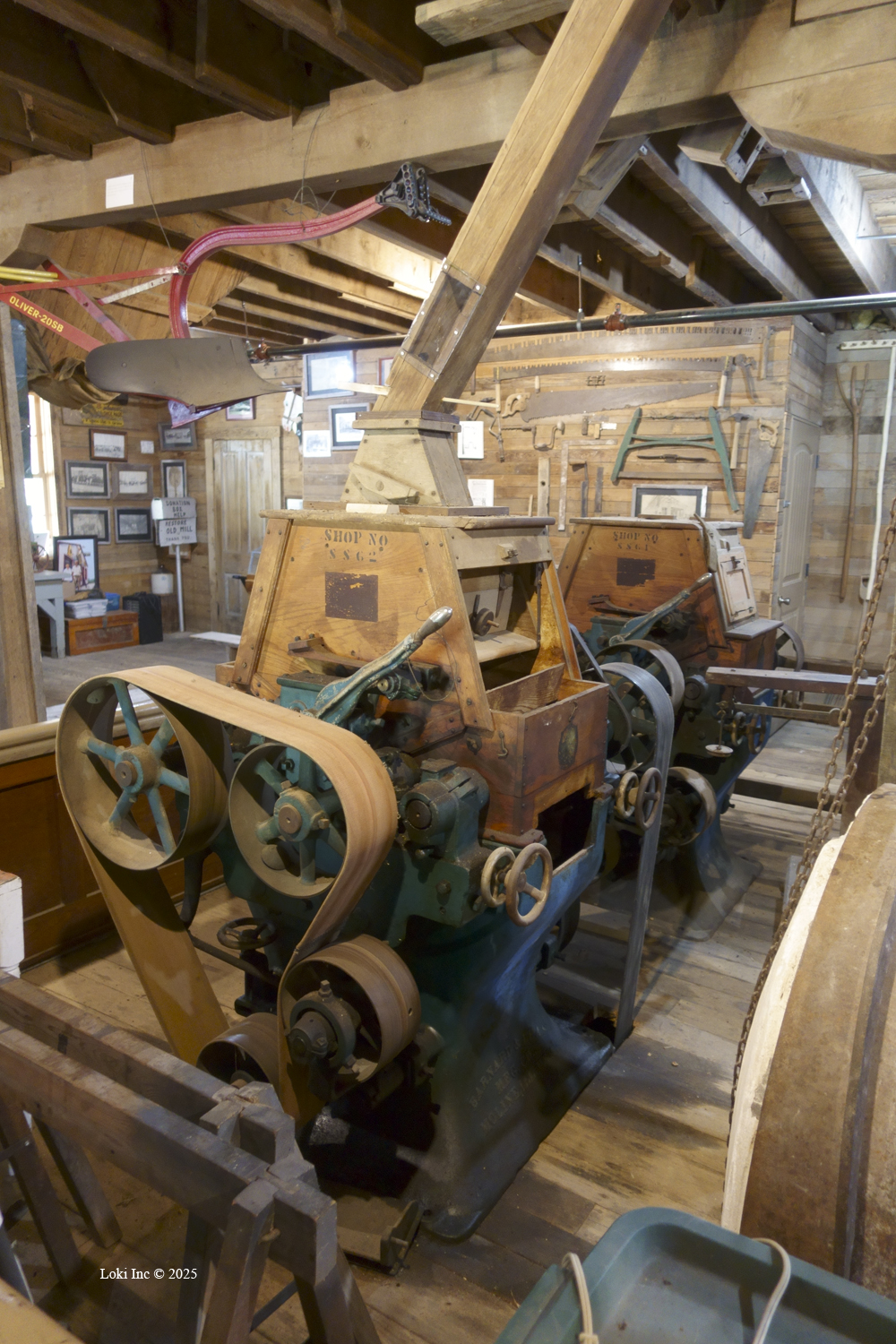
Manning writes that in 1900 three roller mills were added. A ledger on display from December 1920 displays these numbers: 52,200 pounds of patent flour, 6,750 pounds of shorts (mixture of bran, grain and coarse meal), 14,750 pounds of bran (outside layer of a kernel of wheat), 13,585 pounds of corn meal and 7,100 pounds of chops (coarsely ground grain). By 1927, the mill had switched to making only animal feed for cattle, hogs, sheep and poultry. Terry speculated that because of transportation improvements, and the availability of bread and other wheat/corn products in grocery stores, people didn’t have to bring home-grown corn and wheat to the miller any longer.
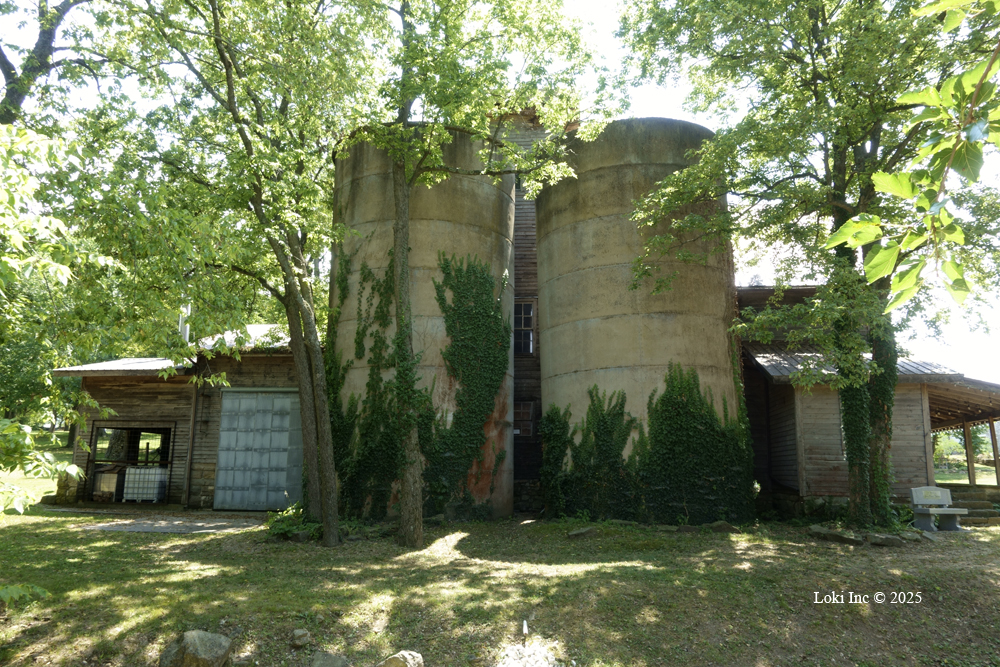
Terry pointed out the two 32-foot tall, 17-foot in diameter concrete/creek gravel silos standing alongside the mill, built in 1917. Poorly designed, these silos failed to keep wheat fresh, and as result, it molded and had to be used for hog feed. Since then, the fine folk of Fair Grove like to use the twin silos as backdrops for all types of photograph sessions. With ivy creeping upward, and the old mill alongside, the pair makes an interesting setting.
The Fair Grove historical and Preservation Society purchased the mill and some acreage in 1984 for $6,000. Manning and his wife, Betty, had moved to Fair Grove from California in 1974 – an “escape to the country” of sorts. They became acquainted with local resident Jerry Thomas. Before they took on the restoration process involved with the mill, the Mannings and Thomas – along with other community people – began working on an old cemetery. In 1977, the Historical and Preservation Society was founded.

Terry said, “Jerry was a local, and generations of his family lived in this area. He saw a vision of this mill and wanted to save it.” By 1986, the National Historic Register of Historic Places added the Boegel and Hine Flour Mill to its list.
Throughout the years, the Society has undertaken major reconstruction projects. Here are a few, including lifting the building to add a new foundation. Reconstruction of the engine room included cut limestone rocks from a dairy barn near the mill. Four-pane, double-hung sash windows came from an old schoolhouse south of Springfield.
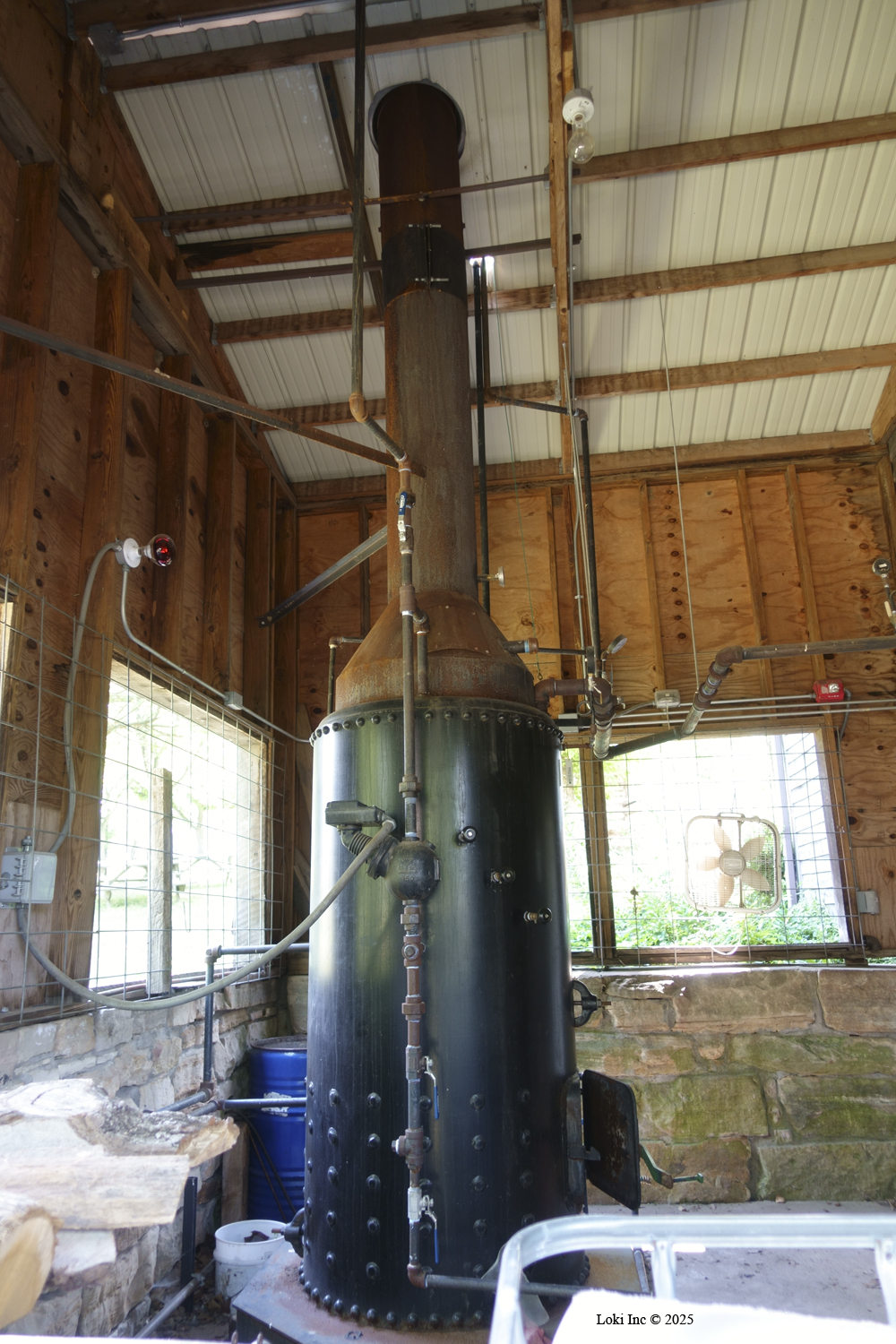
A single-cylinder, 30 horsepower, stationary steam engine – originally manufactured in 1900 and purchased by the Society from an Oklahoma saw mill – had to be completely restored. The second floor’s oak floor became the first floor’s flooring, because the original floor was gone. The Society added a front porch, which now hosts weddings, family reunions and other events. A Cowboy Church holds services on Sundays inside the mill.
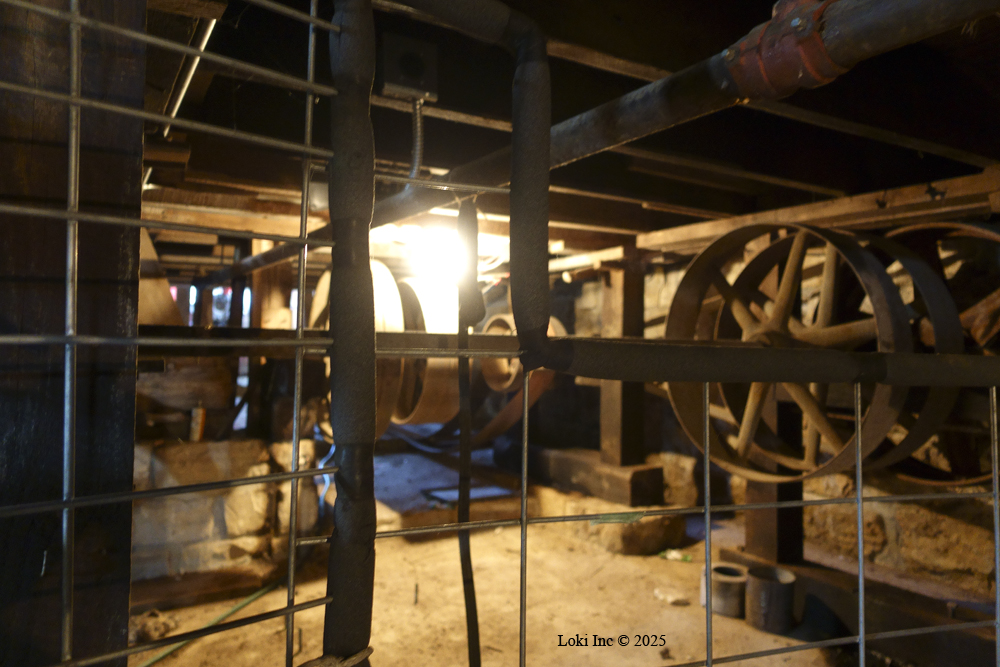
Throughout the years, members of the Society have scoured auctions and sales to find roller mills, a vertical steam engine, a feed mill, corn sheller and the list goes on. A walk through the main floor of the museum is testament to the sweat equity of these volunteers. The walls are filled with photographs, in chronological order, detailing the mill’s history and its significance to the town.
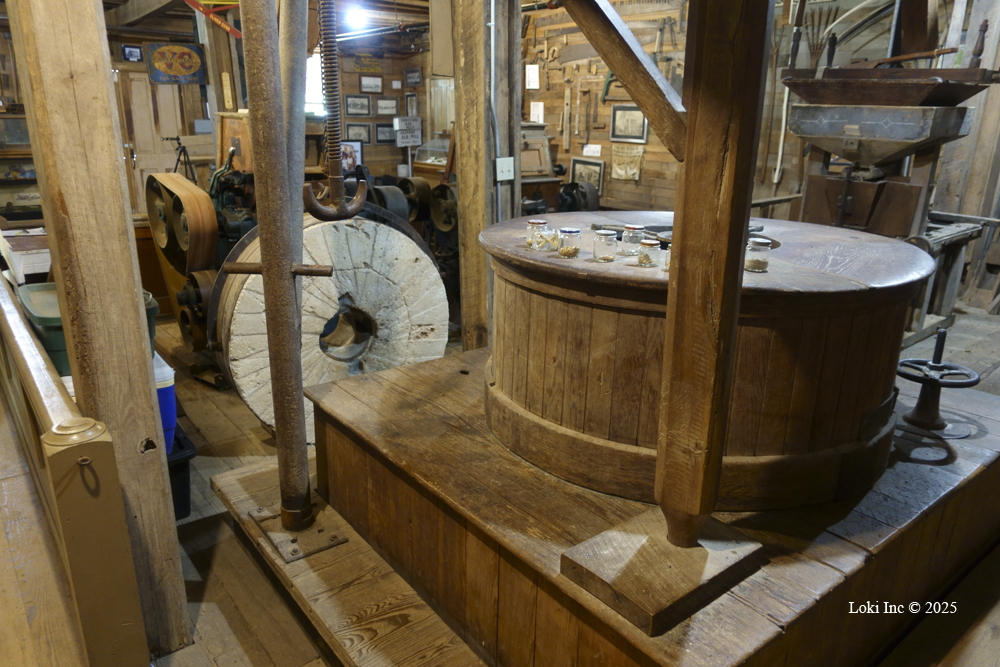
A collection of well-worn overalls adorns a back wall. “You see those old overalls?” said Terry. “I can see those men in them, because I knew them.”
Original to the mill, two 42-inch buhrstones made their way from a quarry in France to Indianapolis, where they were “dressed,” cemented and bound together. The top stone weighs 1,400 pounds.
In the basement, in addition to the steam engines, boiler and pulley system for the mill, collections of horse harnesses, tools and tools/equipment serves as further museum pieces and essential gear. It’s an eclectic combination, well-tended.
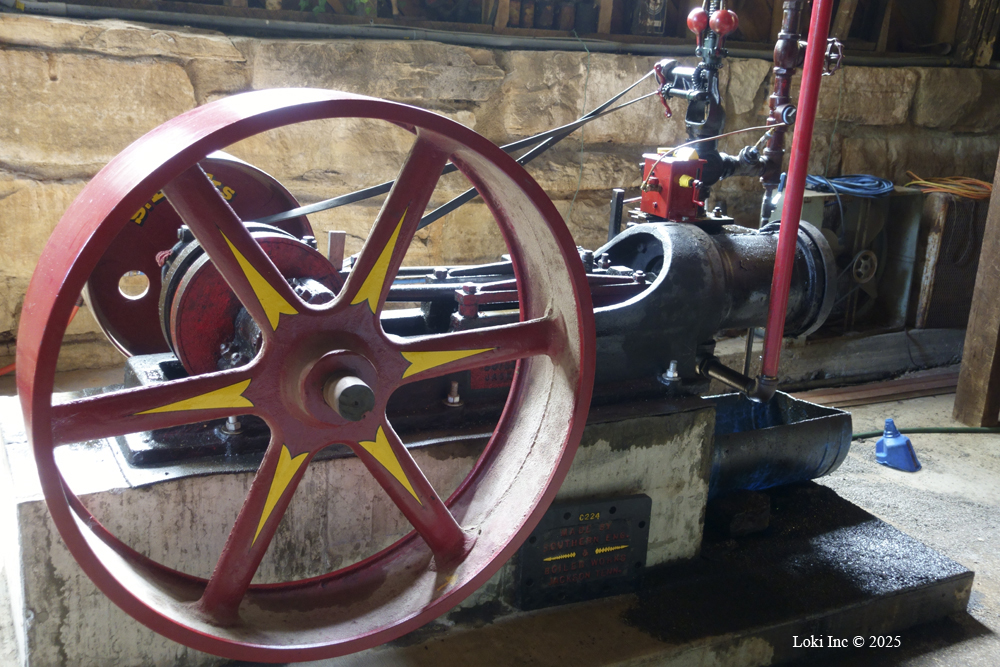
Terry added, “This mill functions; you get to see it grind during the festival. During the ice cream social, which we just had July 20, we run the boiler and the steam engine, so you have a sense of that sound and smell and just all those cool things.”
In that last quote, Terry references two ongoing annual events, both started by the Society in the ’70s: the ice cream social (third weekend in July) and the festival – the Fair Grove Heritage Reunion – which is held on the last full weekend in September.
Looking toward the future concerns Terry. She said, “We’re a very small group – very, very small group. I can’t get interest from the younger generation and I keep telling them, ‘This will go away.’ … Dan tells me, ‘Mary, we’ve been fortunate, and people will step in.’’
In the tour notes, Manning optimistically concludes, “This mill continues to serve the Fair Grove community as a social meeting center, like it has done since 1883.”
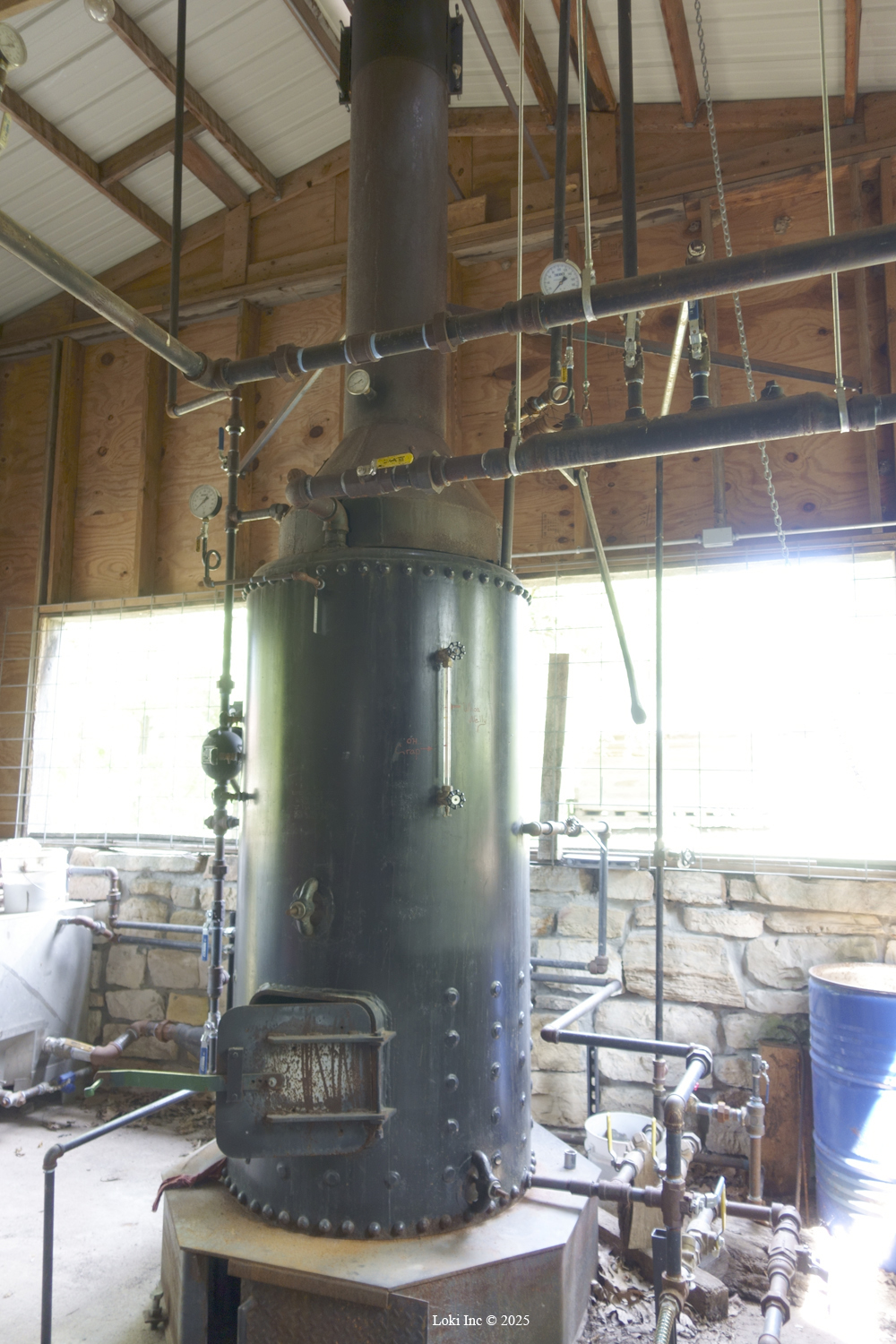
What To Do in the Area
A tour of the Wommack Mill can be arranged by calling 417-759-2807. You may also want to see the nearby Historical Society museum, walk the grounds and check out the cabins constructed by the Society. Then, hop back in the car and drive up the main street to the historical cemetery, which holds not only human remains, but also, two local, trusty mules, Jack and Pete, purchased from Oda Shipman by the Mannings. The illustrious pair appeared at parades and other celebratory events in the area back in the day.
Visit the Fair Grove Historical and Preservation Society website.

